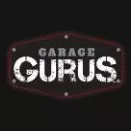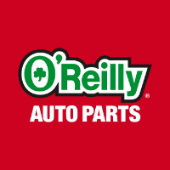-
Welcome to Auto Parts Forum
Whether you are a veteran automotive parts guru or just someone looking for some quick auto parts advice, register today and start a new topic in our forum. Registration is free and you can even sign up with social network platforms such as Facebook, X, and LinkedIn.
1994 cheverolet suburban 5.7 power steering hosesing hoses
-
Similar Topics
-
By Counterman
Clore Automotive introduced its new PRO-LOGIX Model PL6850, 12/24 Volt 120A Flashing Power
Supply and 120/60/40/10A Battery Charger. The company said the PL6850 is designed to provide stable power—on demand, up to 120 amps, to a vehicle electrical system to support module reprogramming, ADAS recalibration, electronic repairs and diagnostic tasks. It also provides full service 12/24V battery charging capability from 10 to 120 amps, to service everything from small vehicle batteries to Group 31 multi-battery packs, Clore said.
In power supply mode, the PRO-LOGIX PL6850 provides power to maintain vehicle electrical system
voltage at a preset level, increasing its output in response to system load increases to maintain a stable
power environment for successful reprogramming. It features a voltage output range of 13.1-14.9V (12V)
or 26.1-29.8V (24V), adjustable in 0.1V increments, allowing the operator to dial the output in exactly as
specified by the supplier of the vehicle under service. According to Clore, it features fast load responsiveness for ultra-quick recovery from system demand increases. It also delivers its massive power with minimal voltage ripple (<100mV), providing a clean flow of power to the vehicle without risk of programming interference.
link hidden, please login to view added that in charging mode, the PL6850 utilizes advanced microprocessor-controlled logic to optimally charge each battery or battery pack serviced. It features the ability to properly charge a wide variety of battery types, including Conventional, AGM, Spiral Wound, Start-Stop, Deep Cycle and Marine lead acid batteries, plus LiFEPO4 Lithium Batteries – enabling beneficial service of virtually any battery type installed in a vehicle. It adapts its charging approach based on the needs of each battery or battery pack it services, including activating a soft start mode on deeply discharged batteries and a battery repair mode on older/distressed batteries. It is also effective on totally dead (0.0V) batteries with its forced start mode, the company said. Clore explained the PL6850 features detachable and field-replaceable input cable and output leads. The #2 AWG output leads are 13’ long, enabling easy access to vehicle batteries/packs under any condition. The unit includes a handle for easy transport around a shop or in and out of a mobile service vehicle.
The post
link hidden, please login to view appeared first on link hidden, please login to view.
link hidden, please login to view -
By Dorman Products
The easy fix for Ram trucks with electronic power steering problems | Dorman 601-903
-





Recommended Posts
Join the conversation
You can post now and register later. If you have an account, sign in now to post with your account.
Note: Your post will require moderator approval before it will be visible.